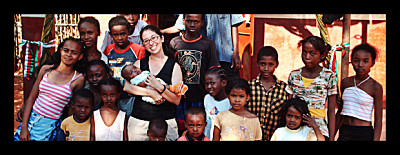
Art is a powerful form of expression and has been a tool artists have used to document the world around us for ages. Created by ART WORKS Projects and co-presented by UN Women, ten international photojournalists entered the lives of women and girls in Afghanistan to document and photograph their everyday lives in a country of conflict and fear. This was their way of presenting development through art in Afghanistan.
Behind the camera lens, these photojournalists were able to depict these women and girls by revealing the immense courage they have for strengthening women’s rights. The highlight of these photographs are representative of how much the world has changed, depicting the status of these women in focuses of healthcare, education, peace and security, and economic development.
This women’s rights focused exhibition is a powerful contribution for the celebration of International Women’s Day in March. Joining in on the exhibition includes a collection of essays and writings by journalist Elizabeth Rubin and curator Leslie Thomas.
Some of the photographers includes Jean Chung, with one of her images above, Jared Moossy, Ron Haviv, and Moises Saman are just a few of them who have their work in this gallery. The exhibition is already open for public viewing at the Rayburn Foyer in Washington, DC. For more information on the artwork and project, visit the website here.
– Jada Chin
Source: UN Women
 In a recent report, the World Health Organization (WHO) has deemed non-communicable diseases as the number one killer throughout the world. Non-communicable diseases (NCDs), such as diabetes, cardiovascular disease, cancer, and chronic respiratory disease, have over an 80 percent occurrence rate in low-income countries and poverty-stricken regions, specifically.
In a recent report, the World Health Organization (WHO) has deemed non-communicable diseases as the number one killer throughout the world. Non-communicable diseases (NCDs), such as diabetes, cardiovascular disease, cancer, and chronic respiratory disease, have over an 80 percent occurrence rate in low-income countries and poverty-stricken regions, specifically. In 1961, John F. Kennedy created the Peace Corps to “promote world peace and friendship.” Whether the Peace Corps stands more for a political strategy or for genuine friendship and goodwill, it has three main basic goals: helping countries meet their needs of trained men and women, providing and promoting a better understanding of Americans abroad (establishing a positive image), and helping Americans understand others.
In 1961, John F. Kennedy created the Peace Corps to “promote world peace and friendship.” Whether the Peace Corps stands more for a political strategy or for genuine friendship and goodwill, it has three main basic goals: helping countries meet their needs of trained men and women, providing and promoting a better understanding of Americans abroad (establishing a positive image), and helping Americans understand others. One voice may not always be enough for the world to hear, but when a community of more than 900 cities joins together to combat and confront development challenges such as global poverty, being heard is a guarantee. The World Alliance of Cities Against Poverty (WACAP) is a network of more than 900 cities, some of them located in nations such as the United Kingdom, Turkey,
One voice may not always be enough for the world to hear, but when a community of more than 900 cities joins together to combat and confront development challenges such as global poverty, being heard is a guarantee. The World Alliance of Cities Against Poverty (WACAP) is a network of more than 900 cities, some of them located in nations such as the United Kingdom, Turkey, 